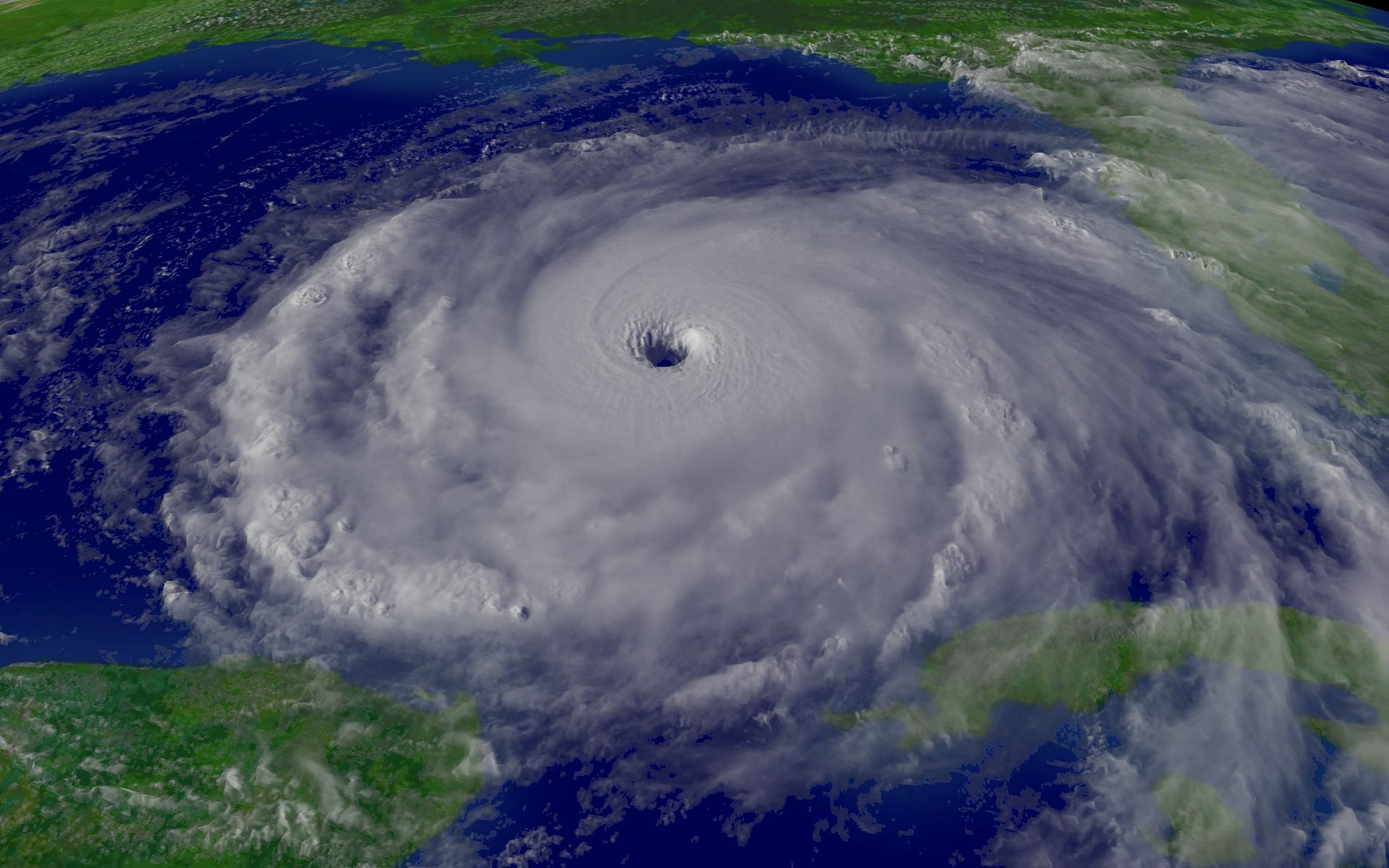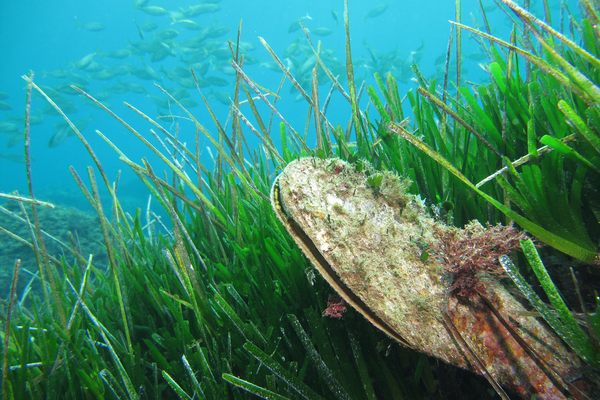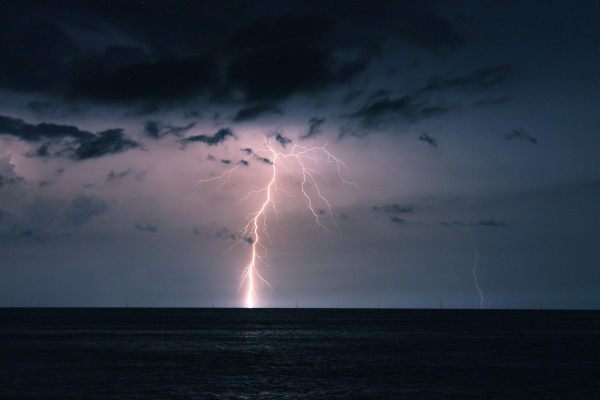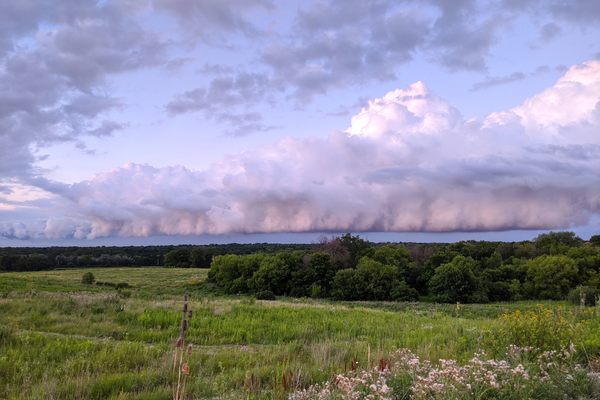Why We Can’t Stop Hurricanes and All the Ways We’ve Tried
The strange, true history of human beings bringing the fight to tropical storms.

It’s already been a terrible year for tropical storms. Hurricane Harvey led to unprecedented levels of flooding in Texas, followed by Hurricane Irma’s battering of the Caribbean and the Florida coast. And the 2017 hurricane season is far from being over. With so much destruction having been unleashed in such a short period of time, many Americans have asked (in their way): why can’t we fight these things?
One tongue-in-cheek Facebook event tried to rally people to point their fans at Irma in an effort to just blow it away (receiving almost 60,000 confirmed attendees), while another suggested that people shoot their guns at the storm (for the record, DO NOT SHOOT AT A HURRICANE). These ideas are obviously far-fetched, but in fact the U.S. has a history of serious attempts at “killing” hurricanes.
One of the earliest, and certainly one of the most sensational, attempts to divert or destroy a hurricane came from the work of the pseudoscientist and sexual revolutionary Wilhelm Reich. A psychoanalyst who trained under Sigmund Freud, Reich came to America in 1939 to spread his discovery of what he called “orgone energy.” According to Reich, orgone was a natural force of life energy that floated in the atmosphere and was often experienced by humans during orgasm. Reich developed cabinets called “orgone accumulators,” which he claimed could collect and store orgone. The cabinets became a hit among bohemians of the time, ranging from William S. Burroughs to Sean Connery.
As Reich’s theories about the nature and power of orgone evolved, he came to think that it could also be used to modify the weather.

This notion led Reich to develop the “cloudbuster” in the early 1950s, which was essentially an array of metal pipes designed to shoot orgone at the sky. Supposedly, a cloudbuster would be capable of both creating and dispersing clouds, and maybe even diverting hurricanes. According to the book Reich and Gurdjieff: Sexuality and the Evolution of Consciousness, Reich hypothesized that hurricanes themselves may have been an expression of orgone acting on the atmosphere. Their general shape mirrors that of a spiral galaxy, which he figured would have taken shape thanks to orgone as well.
Reich’s work had always been controversial, and before he had the opportunity to test a cloudbuster on an actual hurricane, he was jailed for breaking an FDA injunction on promoting and selling his accumulators. Literal tons of his books and works were burned, and Reich died less than a year after being sent to prison. He never got a chance to try and stop a hurricane.
But Reich wasn’t the only one dreaming of fighting hurricanes head-on around this time. An official U.S. government effort to experiment on hurricanes began in 1947, with Project Cirrus. One aspect of this early weather modification project was the first attempt at altering a hurricane using the emerging science of cloud seeding. Cloud seeding is a method of weather modification that involves lacing a cloud layer with materials that are meant to change the power and content of a storm. Today, despite a great deal of skepticism about its efficacy, this is most often performed in an attempt to create rain or to diminish fog or hail. But in 1947, Project Cirrus first tried it on a hurricane.
During the single performed run, pilots flew over a hurricane that was headed out to sea, and dropped a 180-pound payload of crushed dry ice into the storm in an attempt to alter the temperatures of the hurricane clouds, which would in theory slow down the storm’s wind speed. Initially, the pilots said they did notice some change, but it was not actually clear if the changes they observed were caused by the ice.
After the hurricane had been seeded, it took a directional turn, making landfall in Savannah, Georgia, and doing extensive damage. After reading about the seeding experiment in the newspaper, some Savannah residents threatened to sue the government. The legal action came to nothing, but the incident cast a pall on the idea of trying to alter hurricanes.
It wasn’t until 1962 that the next official attempt to alter hurricanes got underway. The National Hurricane Research Project launched another cloud-seeding initiative, this time specifically to combat hurricanes, called Project Stormfury. This project set out to disrupt hurricanes by seeding the walls of the hurricane’s eye with silver iodide, a compound that has a molecular structure similar to ice. The intended effect was the same as before, but the science was more advanced.
After having trouble finding a worthy storm to try seeding, Stormfury finally tested their theory on Hurricane Beulah in 1963, which never made landfall, but was close enough for the seeders to reach and observe. The storm’s wind speeds did appear to drop, but ultimately it was too difficult to tell whether the giant storm was affected by the chemical sprinkle, or had just died down a bit on its own.

The last hurrah for Project Stormfury came in 1969, when they were able to seed Hurricane Debbie for a number of days. Storm winds were observed to drop up to 30 percent, seemingly proving the project’s hypothesis. However the complicated, expensive nature of seeding hurricanes combined with a lack of concrete conclusions ultimately doomed the project. Stormfury continued on in a lesser form until 1983, when it was finally shut down. While altering hurricanes with cloud seeding turned out to be a bust, the decades of research added a great deal of new knowledge to our understanding of hurricanes themselves.
Stormfury was the last official U.S. program directed at attempting to kill tropical storms, but since then both civilians and scientists have continued to put forth plans to combat hurricanes that are decidedly out of the box.
According to the National Oceanic and Atmospheric Administration (NOAA), every hurricane season since about the 1960s, the agency fields questions about whether we could just explode a hurricane with a nuclear bomb. But as the NOAA points out on a webpage they’ve dedicated to debunking this idea, in addition to the nuclear fallout that would be dispersed into the storm, a nuke simply wouldn’t be powerful enough. The page compares the heat released by a fully formed hurricane to be equivalent to “a 10-megaton nuclear bomb exploding every 20 minutes.” If anything, setting off a nuke near a hurricane might strengthen the convection forces, and create a raging, radioactive hellstorm.
A 2007 Canadian documentary called How to Stop a Hurricane proposed several more possible ideas, including: introducing a film on the surface of the ocean that would reduce evaporation; creating a pump that would bring cold sea water to the surface to disrupt the temperature of a storm and weaken it; cooling ocean water with liquid nitrogen. Still others have hypothesized that satellite-based microwave lasers might be able to alter the course of hurricanes, or that supersonic jets could be flown through them to create a counter-current.
In theory, anything’s possible in the long-term, so maybe one day we might actually be able to exert some control over the weather. But hopefully we’re never at a point that we’re desperate enough to try nuking a hurricane.
















Follow us on Twitter to get the latest on the world's hidden wonders.
Like us on Facebook to get the latest on the world's hidden wonders.
Follow us on Twitter Like us on Facebook